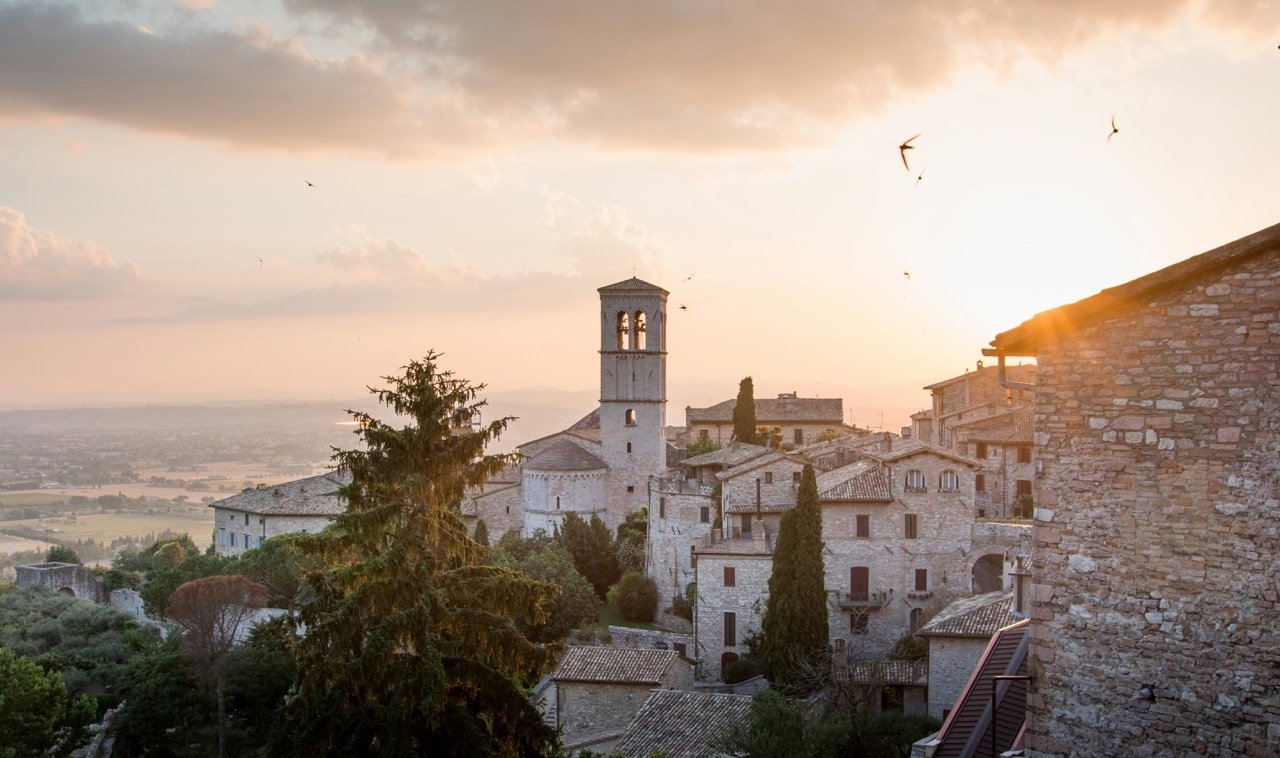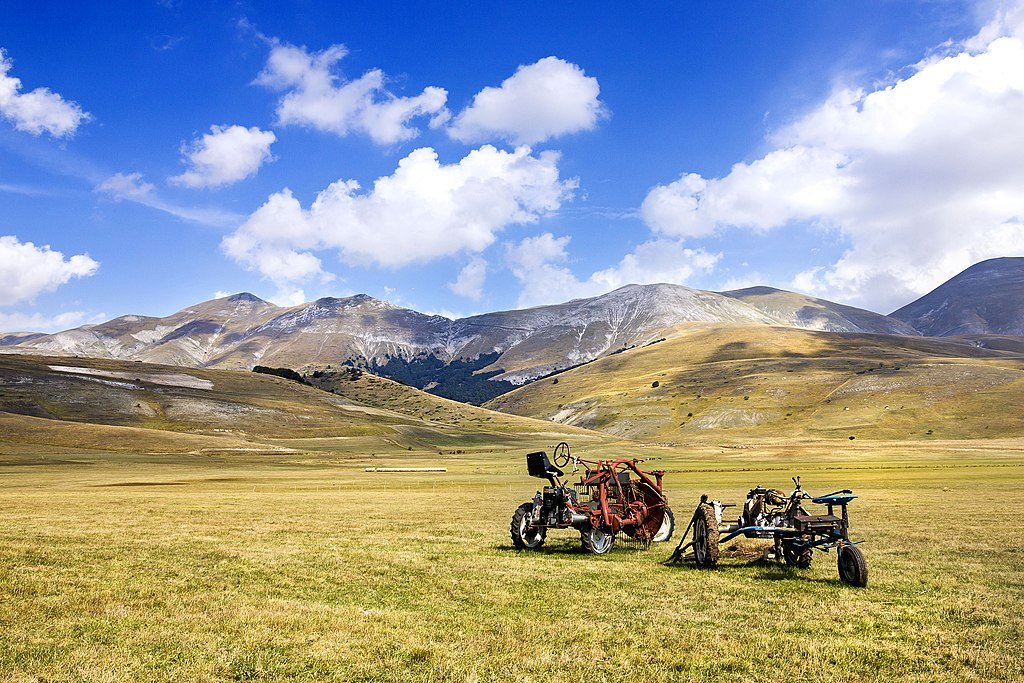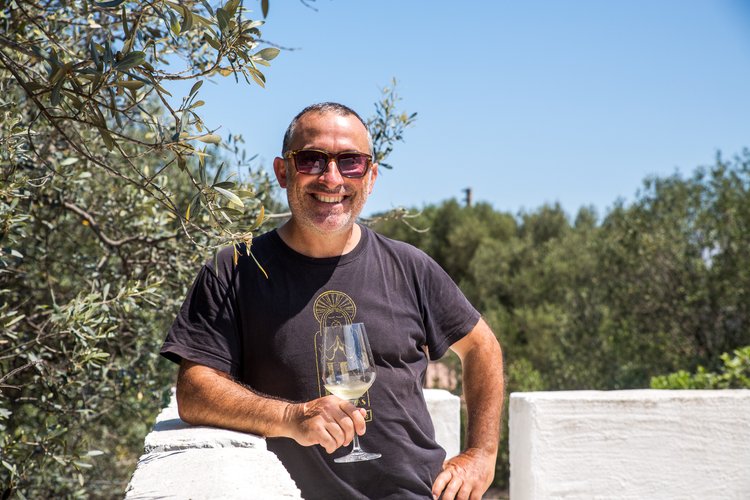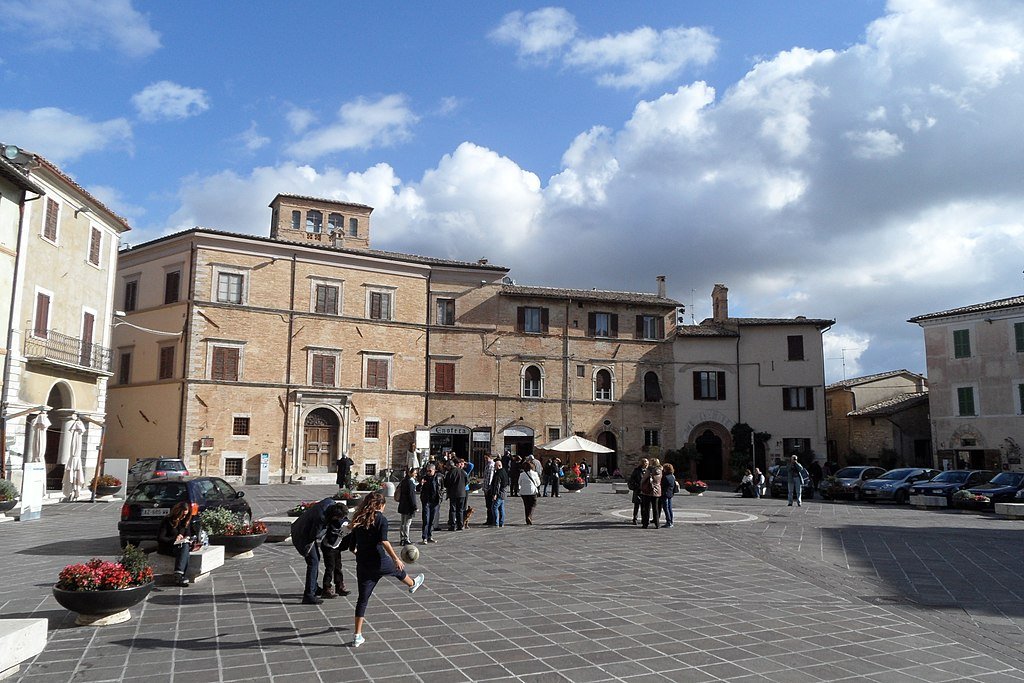13 Places to Visit in Umbria
Affiliate disclosure: some of the links in this article are affiliate links. If you book using one of them, we’ll earn a small commission. All of our info is free to read and free of ads, so we appreciate it!
Despite being adjacent to Tuscany and Lazio, two of Italy's most visited regions, the wonderful region of Umbria is little relatively unknown to foreign tourists.
A land of verdant valleys, wild mountains, and pretty medieval villages built of stone, Umbria offers much of the charm of Tuscany, but with a mere fraction of the crowds.
Aside from the Church of Saint Francis in Assisi, there are no major sights in Umbria and the pleasure of visiting lies in hopping between quiet little towns, driving through scenic countryside, hiking on empty trails, and simply enjoying a slice of truly rural Italy.
Whether it's your first trip to Italy or your fiftieth, you'd do well to spend at least a few days here!
Table of Contents


1. Assisi
Assisi
The birthplace of Saint Francis, Assisi is one of Europe’s most important pilgrimage sites. Visitors from around the world pay homage to the humble saint at the imposing medieval Basilica di San Francesco, where he is interred in the Lower Church in a sarcophagus beneath colorful frescoes.
A sublime fresco cycle by Giotto in the Upper Church tells the life story of this man who nine centuries after his death is still beloved for his kindness. One of his followers, Clare, is honored - and her body is on eerie wax display - in the nearby Basilica di Santa Chiara.
A walk into the upper reaches of this attractive town of honey-colored stone climbs to the Fortezza, on a hillside that affords views far across the Umbrian plains.
Read more on the city in our guide to Assisi.
2. Perugia
Beautiful Perugia
The capital of Umbria, Perugia is by far the region’s most cosmopolitan city, yet the old town is also one of Italy’s most beautifully preserved medieval enclaves. You’ll get swept into the city’s storied past on a walk from Piazza Italia, a balcony above the valley far below, up main street Corso Vannucci to the Duomo on Piazza IV Novembre.
One stop is the Piazza dei Priori, occupied in part by the Galleria Nazionale dell’Umbria, a repository of many of Umbria’s finest art works. Another is a very well preserved office suite from the Renaissance, the Nobile Collegio del Cambio, the frescoed headquarters of a moneychangers guild—you’ll never be content with your cubicle again.
A meander through twisting and turning cobbled lanes brings you to the Via dell’Acquedotto, a scenic walkway across the top of a 13th-century aqueduct. Shops around town sell Perugina chocolates, and if you have a craving for more, you can plan your visit to coincide with the EuroChocolate Festival in spring and fall.
For more info on the city, check out our guide to Perugia.
3. Gubbio
Palace of the Consuls in Gubbio
With its fortified palaces set against dark hillsides, Gubbio is a thoroughly medieval-looking place. Although its the architecture from the Middle Ages that's the main draw, the Romans actually settled here 2,000 years ago and left behind one of the largest theaters from the ancient world.
The town’s movie-set-worthy showpiece is Piazza Grande, a dramatic expanse of brick anchored by the heavily Gothic Palazzo dei Consoli (town hall). The square is open on one side to a stunning view across the wide open Umbrian landscape.
For even more views, the Funivia Colle Eletto cable car bring you up to the top of of Monte Ingino, the mountain on whose slopes the old town is built.
Saint Francis often retreated to these hillsides, and he did Gubbio a great service when he made a bargain with a ferocious wolf - the beast agreed to stop devouring townsfolk the moment they stepped outside the city gates provided they fed him any time he sauntered into town.
4. Lake Trasimeno
Isola Maggiore island on Lake Trasimeno
This splash of blue among the Umbrian greenery is a soothing as the surrounding landscapes of forests, vineyards, and olive groves.
Passignano and Castiglione del Lago are medieval lakeside towns where you can rent boats and bikes, swim from pebbly beaches, or catch a ferry to the enchanting island of Isola Maggiore.
5. Orvieto
Orvieto's stunning cathedral
This extraordinary hill town sits quite atop a volcanic plug, and you’ll see the Duomo gleaming in the sunlight some 1,000 feet above as you approach across the green countryside.
The best way to get up to town is on a funicular across from the train station, and once up there you’ll see that the glistening façade of the black-and-white marble Duomo is an intricate assemblage of mosaics and statuary that depict familiar scenes from the Bible.
Inside is one of the great Renaissance fresco cycles, by Luca Signorelli, full of winged devils and terrified doomed souls. In the soft rock beneath your feet is a labyrinth of more than 1,000 caverns that have been used over the millennia as tombs, storage vaults, refuge in times of siege, and chicken coups.
Another look at the underside is provided by the Pozzo di San Patrizio (Saint Patrick’s Well), an ingenious construction in which a pair of spiral staircases form a double helix for a deep descent to the town’s medieval water source.
6. Parco Nazionale dei Monti Sibillini
A typical landscape in the Monti Sibillini park. Photo: Alessandro Mangione, CC BY-SA 4.0, via Wikimedia Commons
This swath of mountain terrain sweeps across forests and remote valleys and rises to peaks as high as 2,000 meters (6560 feet). Eagles and falcons soar above pristine lakes and a network of trails and paths for mountain biking and horseback riding.
One of the most scenic sights is the upland plains of Castelluccio di Norcia, beautiful at any time but especially between May and late July, when flowering lentils burst into colorful bloom.
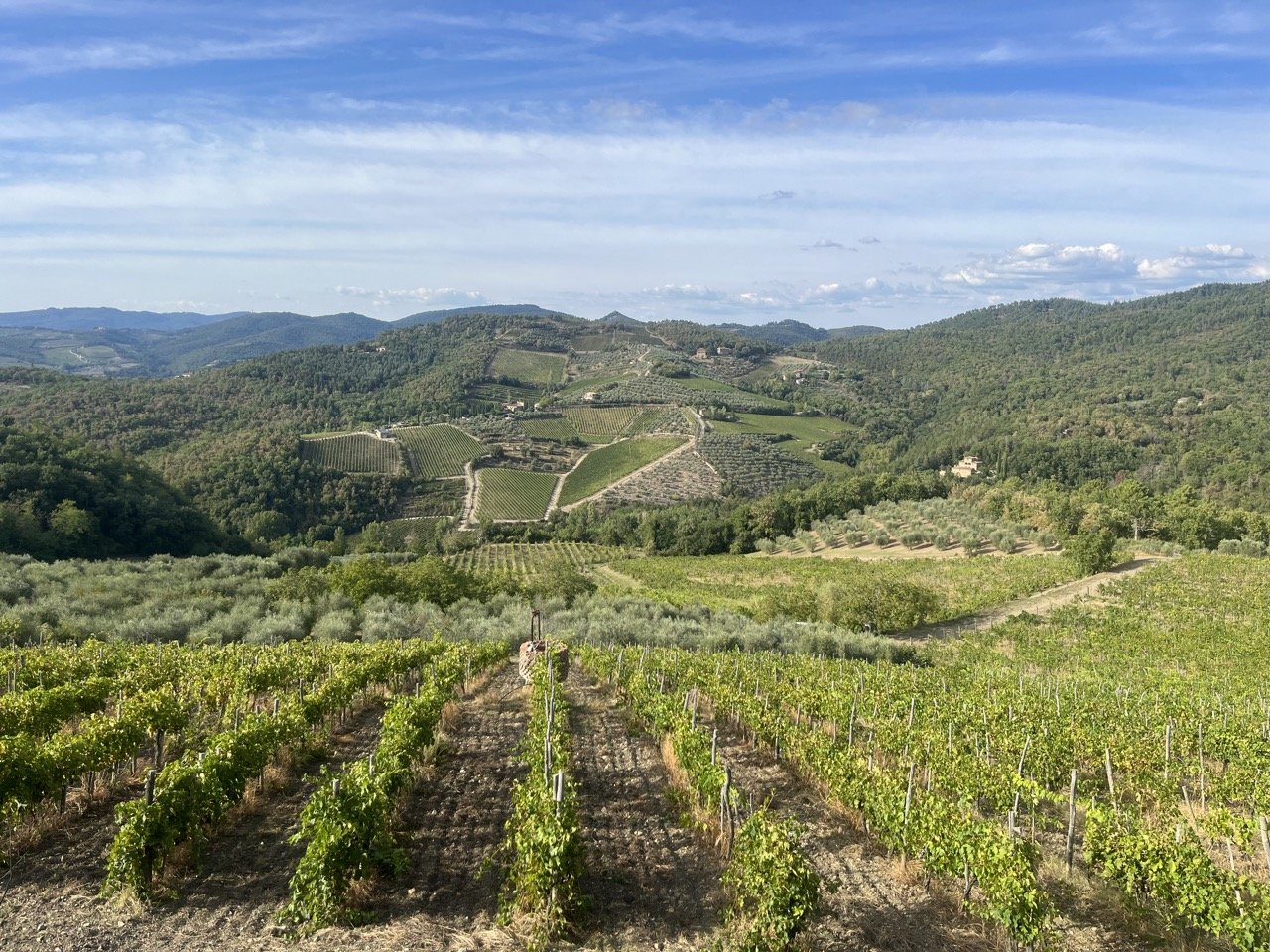
7. Gorges of the Nera River
Waterfalls on the Nera river
The scenic Nera River rushes through gorges and deep green valleys. You can enjoy the spectacle on scenic riverside paths and from the town of Narni, where a portion of a Roman bridge spans the waters.
8. Montefalco
Piazza del Comune in Montefalco. Photo: Umbria ws, CC BY-SA 3.0, via Wikimedia Commons
This lovely town is most famous for wine, especially the reds made from the Sagrantino grapes that grow in vineyards that run right up to the walls. Even without the benefit of a glass or two the place is intoxicating, and a maze of lanes surrounds a circular piazza lined with proud medieval palaces.
Just off the Piazza is the town’s other treasure, a fresco cycle in the deconsecrated church of San Francesco that portrays the life of the saint in touching vignettes. Detailed scenes capture the magic of the Umbrian landscapes that stretch in all directions beneath the town.
9. Narni
A view over lovely Narni. Photo: Wikiriello, CC BY-SA 4.0, via Wikimedia Commons. Cropped from original
What’s above ground here is quite a sight, a medieval warren that clings to the edge of a gorge above the Nera River. Below ground are the remains of an even earlier city, a warren of early churches and secret rooms carved out of the stone.
An arch from one of the longest Roman bridges ever constructed remains in place, and a stone marks the town’s position at the north–south center of the Italian peninsula.
10. Norcia
Hilttop Norcia
This ancient town tucked into the flanks of the Apennines at the edge of the Parco Nazionale di Monte Sibbillini seems a world removed from the rest of Umbria, and the 45-minute drive east from Spoleto seems like a journey to another world.
The road rises through green mountain plains carpeted with wildflowers in warmer months and the domes and towers behind a circuit of walls, with a curtain of peaks behind, appear like a lost kingdom.
Earthquakes in 2016 destroyed some landmarks in the town’s medieval center, but rebuilding continues, and Norcia’s specialties are on full display - ham and sausages made from pork and wild boar and known throughout Italy as norcineria.
11. Spello
An alleyway in Spello
The flower-filled lanes and sunny piazzas of this little town on the flanks of Monte Subasio near Assisi charm anyone who steps through the gates to see the main attraction, the Cappella Baglioni.
Pinturicchio (the Little Painter) filled the chapel with delightfully detailed frescoes portraying the boyhood of Christ set against Umbrian landscapes. Apart from their technicolor beauty, the scenes stand out as a bit of medieval damage control.
The powerful Baglioni clan commissioned them to get back into the good graces of the church after a family feud devolved into the so-called Red Wedding, a frenzied bloodbath that left behind a pile of butchered corpses.
12. Spoleto
The fortress of Rocca Albornoziana in Spoleto
It’s all uphill in this very steep hill town that flourished under the Romans and was fought over fiercely throughout the Middle Ages - from the impressive remains of a Roman bridge at the foot of town to the impressive Rocca Albornoziana fortress at the very top.
No need to exert yourself, though - a nifty network of subterranean moving walkways whisks you around town, from the lively Piazza del Mercato, to the picturesque Duomo, to overlooks along the deep gorge of the Tessino River, spanned by the dramatic Ponte Delle Torri, a 13th-century aqueduct.
13. Todi
Tempio di Santa Maria della Consolazione church in Todi
For a surfeit of magical charm It’s hard to top this little town that teeters at the crest of a tall hill. The Duomo and formidable palaces that were the seats of medieval government surround Piazza del Popolo, one of Italy’s most handsome squares. The views across the plains far below are eye-catching, too.


More Umbria travel info
For more advice on planning a trip to Umbria, check out our other guides and itineraries!
